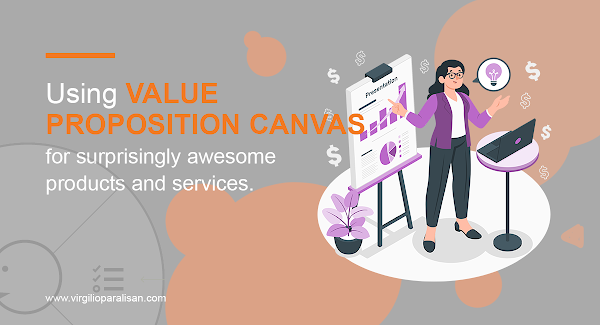A call to leadership is a journey.
If you have chosen me to be your coach then your journey becomes your origin story. If we are to make this journey together, you must be fully aware of what you are committing to.
Your journey must be made up of milestones but before that, you must have the following:
- A destination
- A clear path to the destination
- A road map
- Your personal capacity to embark on this journey and actually complete it
- Your capability to survive the journey
- A guide (or coach)
- Your destination comes in many names.
Your Destination
Your destination can be a real place, it could simply be a state of mind but it has to come in the form of a goal, a mission, a vision, a purpose, a set of outputs, or an objective. A former boss once asked me, if I had to make only two choices in my life, which one would it be: being wealthy or being happy?
My family went from being nothing to really wealthy. We didn’t get to be happy in spite of it. I eventually settled for happiness.
Even today, married for twenty-six years and starting married life from scratch, my wife and I agreed to choose happiness above wealth. We chose a state of mind.
My wife's choice of happiness is to live a life with me and our kids. My path to happiness is developing people. My wife is one of them. (How do you think we met?)
I refer to my personal mission as my "Noble conspiracy towards Change". For more than thirty years I still haven't changed that personal mission statement.
The Path
My path was learning as much about national development programs. In all my past responsibilities I volunteered in exciting ventures, projects, or "missions". I jump on anything to do with developing enterprises, government, and communities.
My choices of consulting engagements are results of the mission I have set for myself. If you are reading this right now, there is a strong probability that our paths will cross somehow if you are involved in some form of development work.
The Road Map
You need a map, a road map to see the nuances, curves, and bends of the back streets and highways to get to your destination.
In your journey, your road maps come in the form of contracts, agreements, memos, a program of work, program/project specifications, terms of reference, schedules, checklists, punch list, bucket list, development plan, job description, project plan, log frame matrix, calendar of activities, agenda, and Gantt charts.
These are the tools to keep you on track. We will get a glimpse of some of these tools. You have to decide where you want to go, articulate the path you want to take, draw a road map, and then evaluate your capacity to make or complete the journey.
Your Capabilities
Take stock of the resources you need. You most likely know more of these resources already. After you have taken stock of your resources, make an assessment of your own capabilities.
Do you know how to use the resources? Are you physically fit to take on the challenges of the journey? Do you have the endurance? Do you have the right mindset to focus and be on track? Do you have the right mental, moral, ethical, or spiritual compass?
Your Guide
An explorer making a journey for the first time, especially a journey to the unknown, will require a guide. All explorers do. Your journey, however, is more than just exploration. It's a mission. Your mission.
A guide is more than just a scout pointing you in the right direction. He is a companion in your journey. A companion who taps you to ensure your personal compass is working.
Your guide will take your hand and literally walk with you through your challenges of facing strange terrain, new people and cultures, weather and help you find the sources of your basic, mental and spiritual nourishment.
In your journey, culture can mean corporate cultures, weather can refer to organizational climate, the terrain can mean organizational structures or physical layout of your work environment.
If you allow me, I will coax you when you're tired, give you courage when you are standing on the side of a cliff, give your soul food for thought, and then ask you passionately to take one more step forward.
A guide will kick you if you're being lazy to walk the extra mile and to give your soul the focus and the strength to keep making the next step.
Your Guideposts
According to the United States Department of Defense under its Civilian Personnel Management Service, there are five levels in the continuum of leadership development.
It starts with leading oneself, followed by leading projects or teams, then leading diverse people, elevating towards leading individual organizations or programs, and then maturing towards leading institutions, national and global initiatives.
As a team leader, your job is creating, growing, and sustaining a successful team. One of my coaching processes offers eight guideposts to help you do your job. The guideposts will allow you to…
- First, prepare and develop yourself as a team leader.
- Second, understand the multi-dimensional dynamics of decision-making and the perennial challenges faced by a leader.
- Third, empathically engage your team members individually and the team collectively.
- Fourth, learn the nuances of delegation, empowerment, achievement and use these in effectively applying your team to face challenges.
- Fifth, be deliberate and purposeful in creating a team culture of success founded on lessons learned from mistakes and the celebrations of achievements.
I hope our journey together truly serves its purpose of being a guidepost to your journey as a team leader.
I can coach you on your leadership style especially in the area of leading effective teams. If you are looking at leadership in the context of an enterprise wide development, we can work on a consulting engagement at that level. I can help you map a leadership development program for your enterprise. I'm just an email away: vyparalisan@virgilioparalisan.com.







Comments
Post a Comment